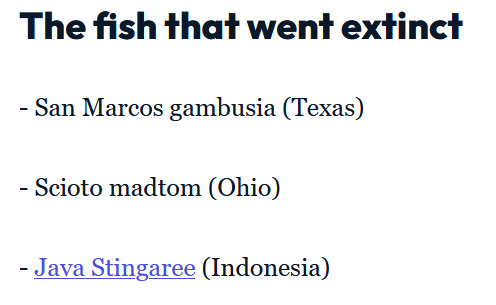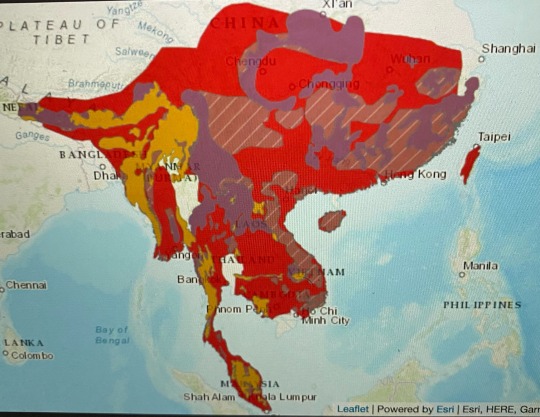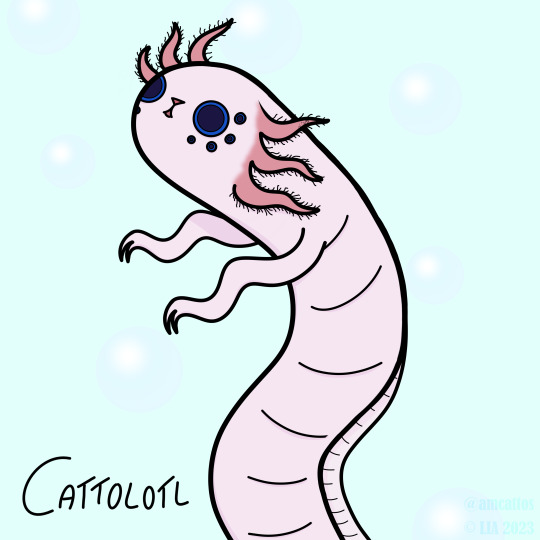#IUCN list
Text
Conservationists from India win The Habitats Trust grant for their ground breaking work
The rainforest canopy in Wayanad, Kerala, is a world unto itself, brimming with biodiversity. While climate change is threatening these canopies, the Gurukula Botanical Sanctuary in Wayanad (GBS), a success story on conservation of rare and endangered plant species of the Western Ghats, steps in with an ex-situ conservation strategy. The community of horticulturalists, naturalists and educators,…
View On WordPress
#Ashoka Trust for Research and Ecology#black-bellied tern#Bombay Natural History Society#conservation#Gurukula Botanical Society#HCL Foundation#Indian skimmer#IUCN list#Kiran Nadar Museum of Art#Roshni Nadar Malhotra#The Forest Way#The Habitats Trust#Thiruvannamalai
0 notes
Text

This is a metal snail (Volcano Snail) that lives on underwater volcano vents in the Indian Ocean. Its shell and scaly feet both are armoured with layers of iron, making it the only animal to incorporate iron sulfide into its skeleton 🐌
📷: Dr Chong Chen/IUCN
#snails#snail life#snail#iron snail#oceans#indian ocean#science#news#research#biodiversity#iucn#iucn red list#science acumen#wildlife biologist#marine biology#biology#volcano#active volcano#amazing
4K notes
·
View notes
Text

Sandhill cranes (Grus canadensis) can be found across much of North America and part of northeast Siberia. Most populations migrate south for the winter, forming flocks of upwards of 10,000 birds.
#id in alt#sandhill crane#birds#animal art#digital art#oops originally i did what i rarely now do and just copy+pasted the species name from the wiki blurb w/out checking it elsewhere#without reading it at all apparently bc i came back later and#did a double take because surely i would have remembered the genus being Antigone. SURELY#i don't know what's going down in taxonomy world but it has been changed to Grus which is what iucn fws etc have listed#as i should have known/remembered in the first place with as much as ive read about them lately
165 notes
·
View notes
Text
New episode of the SquaMates Podcast will air at 16:00 CET/10:00 EST tomorrow, 4 March 2024! It’s a pretty silly one! You can join the premiere on YouTube, or get it on Apple Podcasts or Spotify!

#SquaMates Podcast#squamates#Podcast#Herpetology#zoology#reptiles#amphibians#scicomm#Research#rideable turtles#snakes#Nell Caiman#the IUCN red list#the whole shebang
50 notes
·
View notes
Text
Happy #WorldBinturongDay!
This watercolor is from the William Farquhar Collection of Natural History Drawings, a collection of 477 images of native biota of the Malay Peninsula by anonymous Chinese artists commissioned between 1803-18:

Binturong, c. 1803-1818
Anonymous Chinese artist
William Farquhar Collection of Natural History Drawings
National Museum of Singapore
More on the blog:
#Binturong#Bearcat#IUCN Red list#mammals#National Museum of Singapore#viverrid#William Farquhar Collection of Natural History Drawings#World Binturong Day#Southeast Asian art#Asian art#Chinese art#watercolor#Malay Peninsula#animal holiday#illustration#painting#natural history art#scientific illustration#Colonial art
122 notes
·
View notes
Text
The animals officially declared extinct in 2023




16 notes
·
View notes
Text
Welcome to the first IUCN Wednesday! Today we’re going to be talking about one of my favorite cats the clouded leopard

(Image description: a clouded leopard sitting on a branch looking in the direction of the camera)
They are a small cat only weighing up to 51 lbs, they are mainly arboreal (the best climbers among cats) and hunt macaque, hog deer, slow loris, and other small vertebrates.
A fun fact about these guys are that they are often referred to as “modern-day sabertooth cats” and you can see why

(Image description: clouded leopard yawning, showing off their teeth)
Their canine teeth unusually long for their body size (the upper canines being about 3x longer than the basal width of its socket).
Unfortunately life hasn’t been kind to these guys, most of their subspecies are classified as vulnerable, with the Sumatran and Bornean classified as endangered. The Formosan subspecies has actually been classified as extinct since 2012 though in 20-8 there were two alleged sightings but these can’t be confirmed.


(Image description 1: a map of the current and past geographical range of the clouded leopard. Image description 2: a key to the previous map listing extant, possibly extant, possibly extinct, extinct)
(All subspecies are being included here)
This is the IUCNs most recent geographical range based off of the last species assessment from November 2020. The estimated number of mature individuals ranges from 3700-5580 and the population is decreasing.
Their biggest threats are of course people from human development to agriculture to transportation (roads and railways) to how we modify the environment (dams). That doesn’t even include the international pet trade or being killed for their pelts or body parts for medicine. Or because they’re seen as a threat (just look at how people over reacted when Nova was let out at the Dallas zoo).
These guys are really amazing (more so than i can say in a single post) so i encourage you to do your own research and hopefully fall in love with them like i have.
70 notes
·
View notes
Text

I drew this back in the fall of 2020. It depicts a Vancouver Island Marmot (Marmota vancouverenis) and her pup. Vancouver Island Marmots are Critically Endangered with approximately 90 mature individuals remaining. You can learn more about them here: https://www.iucnredlist.org/species/12828/22259184
#animals#marmots#Vancouver Island#baby animals#IUCN#iucn red list#critically endangered#pnw#pnw animals#pacific northwest
7 notes
·
View notes
Text
When I was researching about the IUCN Red List, I came across this article.


Wait! Crafts can become extinct?! OMG!!! is very interesting 😲
3 notes
·
View notes
Text
Do you think the scientific communities in marvel and dc are fed up because they have to keep changing basic categorizations to accommodate mutants/mutates, aliens, etc. Like there is no way they are able to keep the basic animal kingdom categorization system. Dogma out the fucking window. Complete upheaval of every basic organism list and categorization system.
#I’m just imagining an alien invasion people freaking out#and a biologist about to break shit because now they have to revise the entire organism classification system#again#and then another biologist like how do I add this species to the IUCN red list#god and don’t even imagine the physicists#and the chemists trying to figure out where to put new elements on the periodic table#GOD#I’d die
11 notes
·
View notes
Note
Are there any cool sharks that have sadly gone extinct? Or are in danger of going extinct?
So I've actually gone and signed up for an account on the IUCN website to look into this specifically without spending ten million years trying to find the answer. A short summary of those at risk of extinction and those already extinct below :)
According to the IUCN’s Red List (which basically gives you a run down on how close or far an animal is to extinction), searching “sharks” and narrowing down the search to CR (critically endangered), EN (endangered), and VU (vulnerable), I got 420 hits. Of those, it will include animals that have “shark” in their name; which may include non-shark fish. But I can at least narrow it down a bit further using taxonomy as a means to filter out non-shark animals. This means, for taxonomy, we look for “Chondrichthyes” as a class of animals; aka sharks and rays.
The result then narrows down to 416. These are sharks. And now I can sort the order of results from VU right the way down to CR (lower to high on the concern scale). Since we want to know the most at risk first, I can reverse this sorting so it’s most to least in danger.
There’s been no recently extinct sharks, according to the IUCN’s list, but that’s not to say shark species aren’t at great risk of extinction, or aren’t critically endangered because of a range of reasons.
So, at the top of the list we have:
Scalloped Hammerhead
Angelshark
Oceanic Whitetip Shark
Hidden Angelshark
Argentine Angelshark
Chilean Angelshark
Humpback Smoothhound
Indian Swellshark
Daggernose Shark
Ganges Shark
Dwarf Gulper Shark
Reticulated Swellshark
Striped Smoothhound
Scoophead Shark
Sarawak Pygmy Swell Shark
Pondicherry Shark
Pacific Smalltail Shark
Borneo Shark
Shorttail Nurse Shark
Lost Shark
Smoothback Angelshark
I’ve excluded rays from this list since they’re a different sub-branch of the Chonrichthyes class to sharks. That gives us 21 sharks classed as critically endangered (aka at risk of extinction) so far on the list. This is only from the first page, by the way.
Out of the list, one shark is potentially thought to be extinct which is the Lost Shark (good name). Only 3 specimens of the species have been found in Borneo, Thailand, and Vietnam; all are over 80 years old. They were mistaken for a species of Smalltail Shark at first, but now they’re considered to be their own species. As a result, IUCN’s Red List classifies the Lost Shark as CR or possibly extinct.
This made me sad. I need to go cuddle Greg the Mako Shark who lives on my bed to feel better now.
#sharks#shark facts#education#information#shark asks#animal conservation#marine biology#iucn red list
65 notes
·
View notes
Text


© LIA 2023
Cattolotl (CR)
Axolotls (Ambystoma mexicanum) may be pretty popular pets and internet stars with their silly antics and strange appearance but unfortunately in the wild, they are now critically endangered. They remain at only three sites and their population is estimated to be
between 50 to 1000 individuals. Their decline has been mainly attributed to the increasing urbanisation of Mexico City resulting in pollution and desiccation of their aquatic home. Previous collection for the international pet trade, local consumption, and the introduction of invasive carp and tilapia have also threatened the species.
Find out more on the IUCN RedList website.
#catto#illustration#cat#alien#monster#digital illustration#art#axolotl#pink#iucnredlist#iucn#iucn red list#endangered species#endangered#critically endangered
3 notes
·
View notes
Link
For a conversation outside of Tumblr, I did some digging on the IUCN site and analyzed the status and trends of 540 shark species listed on the site. Here's what i found:
Of 540 species, 40% lie within near-threatened, threatened, endangered, and critically endangered, collectively. 13.7% are data deficient. Leaving 46.3% as least concern. This does not include extinct species.
Statistically, yes, the majority for shark are LC,. But not by a huge margin. That’s excluding the potential status of the data deficient. Which is better than I expected, but still not good.
Of 540 species, 39.5% are decreasing, 27% are stable, 2% are increasing, and 31.5% are unknown; Rounded to the nearest tenth. That right there is chilling. 2% of least-concern species are decreasing in population. So, it seems that the sharks that are coping with the anthropogenic extinction event are coping very well. Others are less fortunate.
A more comprehensive analysis would determine how many of these species are specialists or generalists vs. their status and trend, but that would take all week
6 notes
·
View notes
Text
"In one of Africa’s last great wildernesses, a remarkable thing has happened—the scimitar-horned oryx, once declared extinct in the wild, is now classified only as endangered.
It’s the first time the International Union for the Conservation of Nature (IUCN), the world’s largest conservation organization, has ever moved a species on its Red List from ‘Extinct in the Wild’ to ‘Endangered.’
The recovery was down to the conservation work of zoos around the world, but also from game breeders in the Texas hill country, who kept the oryx alive while the governments of Abu Dhabi and Chad worked together on a reintroduction program.
Chad... ranks second-lowest on the UN Development Index. Nevertheless, it is within this North African country that can be found the Ouadi Rimé-Ouadi Achim Faunal Reserve, a piece of protected desert and savannah the size of Scotland—around 30,000 square miles, or 10 times the size of Yellowstone.
At a workshop in Chad’s capital of N’Djamena, in 2012, Environment Abu Dhabi, the government of Chad, the Sahara Conservation Fund, and the Zoological Society of London, all secured the support of local landowners and nomadic herders for the reintroduction of the scimitar-horned oryx to the reserve.
Environment Abu Dhabi started the project, assembling captive animals from zoos and private collections the world over to ensure genetic diversity. In March 2016, the first 21 animals from this “world herd” were released over time into a fenced-off part of the reserve where they could acclimatize. Ranging over 30 miles, one female gave birth—the first oryx born into its once-native habitat in over three decades.
In late January 2017, 14 more animals were flown to the reserve in Chad from Abu Dhabi.
In 2022, the rewilded species was officially assessed by the IUCN’s Red List, and determined them to be just ‘Endangered,’ and not ‘Critically Endangered,’ with a population of between 140 and 160 individuals that was increasing, not decreasing.
It’s a tremendous achievement of international scientific and governmental collaboration and a sign that zoological efforts to breed endangered and even extinct animals in captivity can truly work if suitable habitat remains for them to return to."
-via Good News Network, December 13, 2023
#chad#abu dhabi#north africa#rewilding#endangered species#conservation#zoology#conservation biology#oryx#good news#hope#texas#big game#animals#endangered#environmentalism#environmental science#zoo#zoos#zoo animals
24K notes
·
View notes
Text
IUCN Director General Message for World Wildlife Day 2024.
youtube
Message for World Wildlife Day 2024 by the International Union for Conservation of Nature (IUCN), Director General Mr. Grethel Aguilar.
#IUCN#world wildlife day#wildlife#3 march#Red list of threatened species#statements#International Union for Conservation of Nature (IUCN)#IUCN Species Survival Commission#IUCN Pangolin Specialist Group#Youtube
0 notes
Text
going down a rabbit hole of extinct species really makes you realize that we know so little. did you know there were mites that specifically targeted carolina parakeets? and they went extinct alongside them? and they weren’t even on our record of existence until we found them on parakeet skins?
halarachne americana went much the same way. when the last caribbean monk seal died, so too did the last nasal mite. everything is connected. even the species that are deemed small, or ugly, or disgusting, matter in some way. this will haunt me for the rest of my life.
#.txt#so many species gone that dont even have wikipedia pages#so many species gone that arent even on the iucn red list#and people wont care bc they weren't ''Big'' and ''Important'' and ''Pretty''#or god forbid they were parasitic which ppl fucking despise#i am in in mourning
6 notes
·
View notes